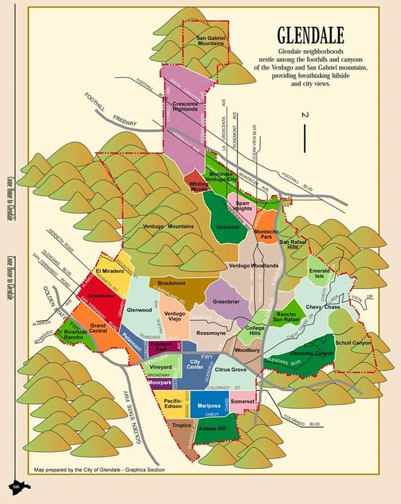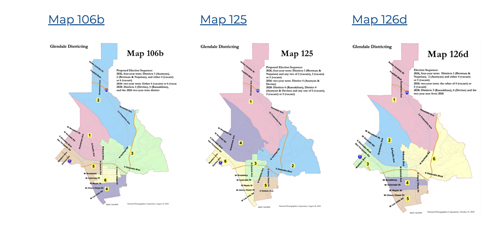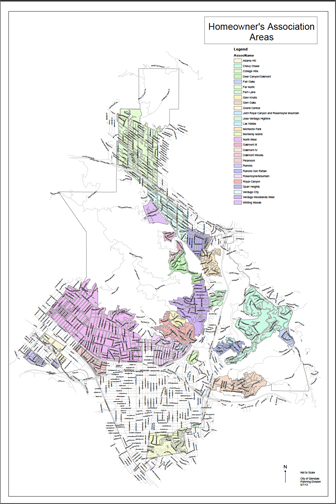
By Eliza PARTIKA
As Glendale City Council delays its decision to the November 2024 ballot on district-based elections, neighborhood associations are considering the pros and cons of the remaining proposed maps after months of community outreach by the city.
Stephen Meek, president of the Adams Hill Neighborhood Association, said he feels constructing districts that meet the needs of all Glendale neighborhoods is challenging but he hopes the district structure, if it comes to fruition, will make it easier for residents to interact with members of council.
“It will get people to know their neighbors and their representatives [better]. Representatives will attend more events. Neighbors in these districts will know someone who lives in their community is looking out for them,” he said.
A transition to district elections and expanding City Council from six to seven members is expected to reduce the cost of running for a seat by dramatically decreasing the cost of outreach. Hopefully the transition to district elections will also increase the pool of candidates running for election. In addition, Council hopes districts will increase the likelihood that Council members are renters or who live in South Glendale, according to the Map Glendale website.
“Districting is a complex issue. Individual neighborhoods have different characteristics that make them unique. Collectively, the neighborhood associations want the district maps to respect neighborhood boundaries to ensure the districts are cohesive and best represent the neighborhoods that comprise them,” said Grant Michals, president of the Glendale Homeowners Coordinating Council, the organizing body of the neighborhood associations in Glendale.
Michals said districting could make the political involvement of neighborhood associations challenging if voting districts split neighborhoods.
“The purpose of a neighborhood association is to engage the community and organize feedback. Having one association fall into two different districts would compromise the goal of districts representing communities of interest,” he said.
Mary-Lynne Fisher, president of the Crescenta Highlands Neighborhood Association, said her main concern in her neighborhood is that a councilmember hasn’t lived there in at least 10 years. She hopes the requirement that district-elected council members live in the district they represent will give her neighborhood a better voting representation and that it will offer more potential for community involvement.
“I think the primary advantage of having districts is that Glendale is such a large city and so diverse geographically that the various areas, particularly the contrast between representation in Crescenta Highlands and down in South Glendale, are large and they have different interests and different priorities,” she said.
In a presentation on Nov. 7, Doug Johnson, the contractor in charge of the districting process, emphasized that the purpose of the meeting was not to choose a final map, but to narrow down the decision to maps with different attributes that would encourage conversation and engagement from Council and the public.
“As you are pondering this, we expect a lot of public input and you can change your mind down the road,” Johnson noted as Council debated pros and cons about each map during its Nov. 7 meeting.
“This is a non-binding decision. It took a long time to walk through all these maps. If residents want to dig in, and Council members expressed the same concerns, that’s a lot of maps to dig through, and it takes time to figure out what the differences are. If we take two or three maps that show different approaches, that makes it easier for residents to say, ‘How does this map differ from that map, what do I like and dislike about each one?’ That’s why I want to focus on these maps, so we can really engage with the public,” said Johnson.
“Any change to the existing election process is a serious consideration that requires community engagement and support. As such, the City Council is performing its due diligence in thoughtfully approaching this matter,” wrote Stephanie Mkhlian, communications director for the City of Glendale in an email to the CV Weekly.
To further increase community engagement and involvement, the community outreach consultant will conduct additional direct outreach focused primarily on community groups. This will take place via phone calls to community organization leaders. Groups interested in the districting process will be invited to stakeholder meetings. In addition, two public forums will be held after those dedicated meetings.


